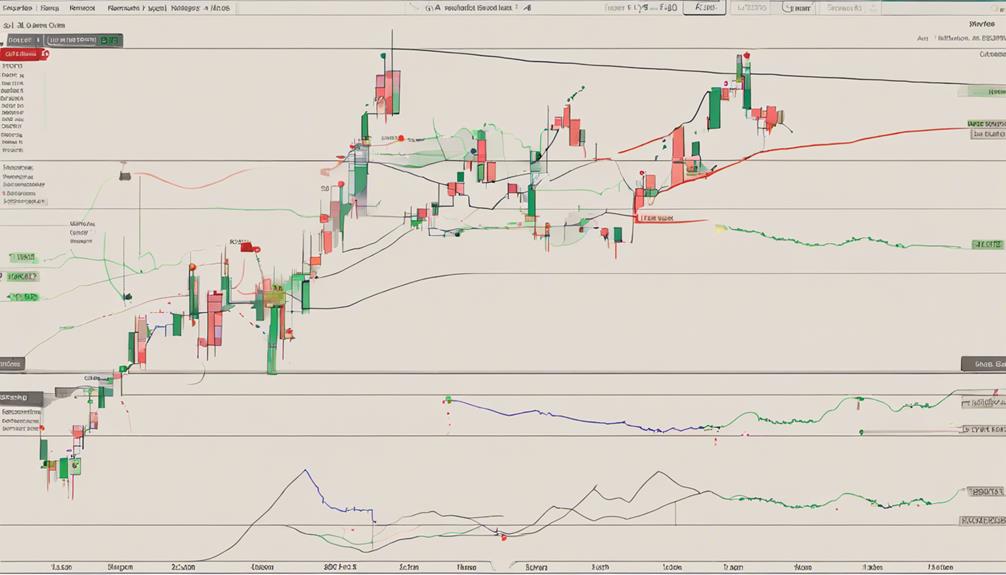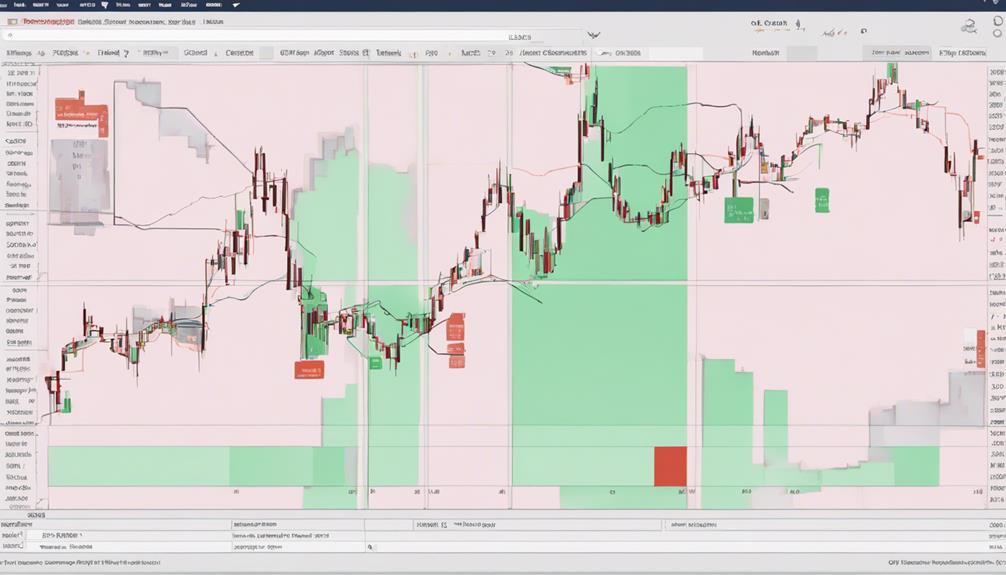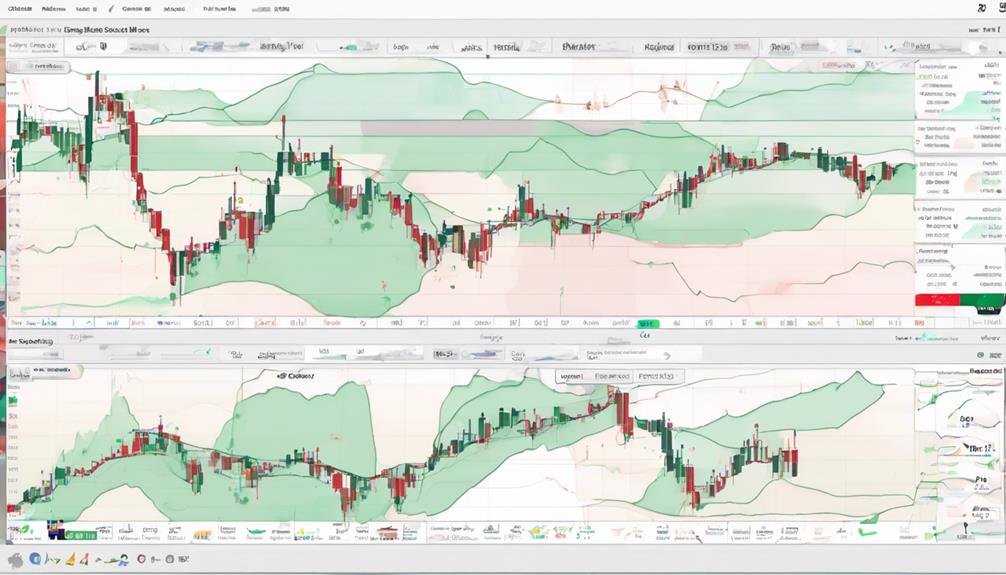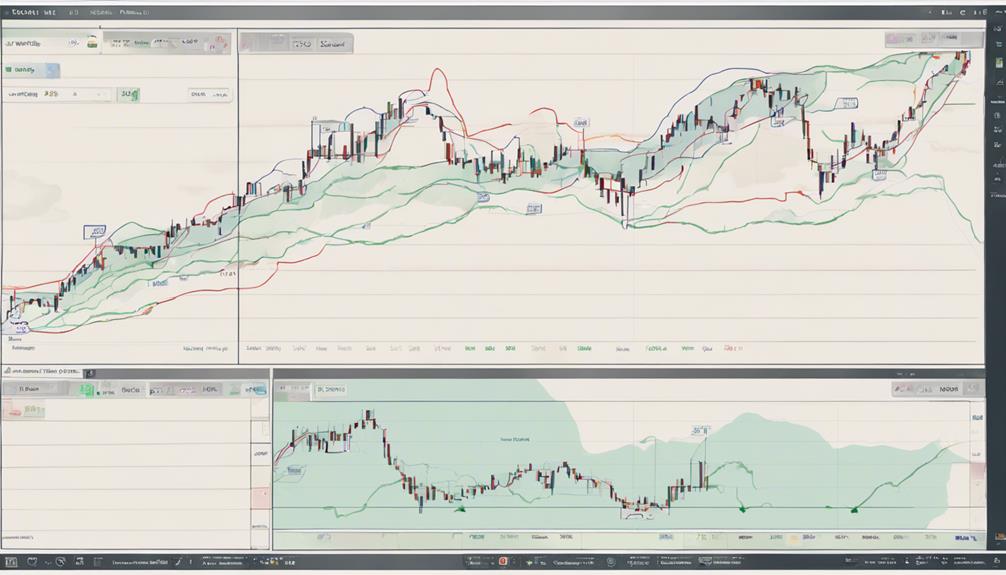When you gaze at the Ichimoku Cloud, it's like seeing the market's hidden patterns unveil before your eyes. Wondering why this indicator works so effortlessly?
Well, its simplicity lies in the intricate balance of its components, each playing a vital role in painting a complete picture of the market landscape. As you explore further, you'll uncover the secrets behind this powerful tool and understand why traders find it indispensable in their decision-making process.
Curious to unravel more about the magic behind the Ichimoku Cloud?
Key Components of Ichimoku Cloud
Within the Ichimoku Cloud indicator, the key components play distinct roles in analyzing market dynamics and guiding trading decisions.
The Tenkan Sen and Kijun Sen are crucial for identifying trend direction, while Senkou Span A and Senkou Span B form the Cloud, indicating potential support and resistance levels.
Chikou Span confirms sentiment by comparing current to past price action. These components collectively provide a holistic approach to understanding price movement, offering insights into both trend direction and momentum.
Understanding Ichimoku Cloud Signals

Understanding Ichimoku Cloud Signals involves interpreting the relationship between the Tenkan Sen and Kijun Sen lines to determine trend direction and potential trading opportunities. The Ichimoku Cloud, a technical indicator, offers insights into price trends, support and resistance levels, and entry and exit points.
By observing the cloud's color changes and the Chikou Span's position relative to price, traders can confirm bullish or bearish sentiments. Cloud breaks are significant signals indicating potential shifts in market momentum, guiding traders on when to enter or exit trades. Monitoring crossovers and Chikou Span locations within the cloud helps identify strong trends for informed trading decisions.
These signals provide a structured approach to analyzing trends and making strategic trading choices.
Ichimoku Cloud Trading Strategies Simplified

To simplify your trading approach and maximize your decision-making efficiency, Ichimoku Cloud Trading Strategies offer a structured framework for capitalizing on trend direction, momentum shifts, and key support and resistance levels.
- Trend-following: Utilize Ichimoku Cloud to ride trends with defined entry and exit points.
- Breakout strategies: Identify potential breakouts using the Cloud's twists and turns.
- Reversal strategies: Pinpoint trend reversals by observing the Chikou Span's relationship with price action.
- Combining with other indicators: Enhance signal accuracy by integrating Ichimoku Cloud with complementary technical tools.
- Support and resistance levels: Identify key levels where price may stall or reverse, aiding in trade management.
Benefits of Using Ichimoku Cloud

The Ichimoku Cloud indicator streamlines trend analysis, momentum identification, and support/resistance detection, making it a valuable tool for traders seeking efficient decision-making. By combining various indicators into one chart, the Ichimoku Cloud simplifies technical analysis, helping you pinpoint entry and exit points with ease.
It provides a quick assessment of trend direction, momentum, and potential support and resistance levels, giving clear signals for your trading decisions. The Cloud's components, like Tenkan-Sen and Kijun-Sen, offer insights into the strength of trends based on the Cloud's angles and thickness.
Widely used in the EU, Australia, UK, and Japan, the Ichimoku Cloud enables comprehensive analysis, making it a go-to tool for traders looking to enhance their strategies.
Practical Application of Ichimoku Cloud

Analyzing the Ichimoku Cloud's components allows traders to efficiently assess trend strength and direction for strategic decision-making. When applying the Ichimoku Cloud indicator, consider the following key points:
- Utilize the cloud's thickness, angle, and color changes for accurate trend identification.
- Look for clear entry and exit signals based on crossovers and price interactions with the cloud.
- Confirm buy or sell signals by understanding the Chikou Span's position relative to price action.
- Take advantage of the straightforward visual representation provided by the Ichimoku Cloud for a holistic view of the market trend.
- Assess trend strength and direction by incorporating the indicator's features into your analysis effectively.
Can the Simplicity of the Ichimoku Cloud Indicator Explain Its Effectiveness?
The ichimoku cloud indicator simplicity contributes to its effectiveness by offering a clear visual representation of support and resistance levels, trend direction, and potential buy or sell signals. Its straightforward design allows traders to quickly analyze market conditions and make informed decisions based on the indicator’s signals.
Frequently Asked Questions
Why Does Ichimoku Cloud Work?
The Ichimoku Cloud indicator works by combining key components to offer a comprehensive view of price action. It helps traders identify trends, assess momentum, and determine entry/exit points efficiently. Its simplicity and effectiveness make it a favored tool for technical analysis.
Is the Ichimoku Cloud Indicator Accurate?
Yes, the Ichimoku Cloud indicator is accurate when used correctly. Traders interpret signals effectively, improving accuracy. Combining it with other indicators enhances confirmation. Understand its nuances for precise trading decisions in varying market conditions.
What Are the Drawbacks of Ichimoku?
Ichimoku Cloud's drawbacks include complexity for beginners, potential lag in signals affecting decisions, and the need for time investment to master it. Its overwhelming components can confuse users; awareness of limitations is key.
What Is the Best Indicator to Use With Ichimoku Cloud?
When using the Ichimoku Cloud, the Relative Strength Index (RSI) serves as a valuable companion, confirming trend signals. Combining RSI with Ichimoku enhances signal accuracy, empowering you to navigate market conditions with confidence.
Conclusion
In conclusion, the Ichimoku Cloud indicator is like a skilled navigator guiding traders through the turbulent waters of the market.
By combining various components to paint a clear picture of trends and support/resistance levels, it simplifies the decision-making process.
With its adaptability and reliability in generating signals, it serves as a valuable tool for traders looking to navigate the complexities of the financial markets with ease and confidence.
